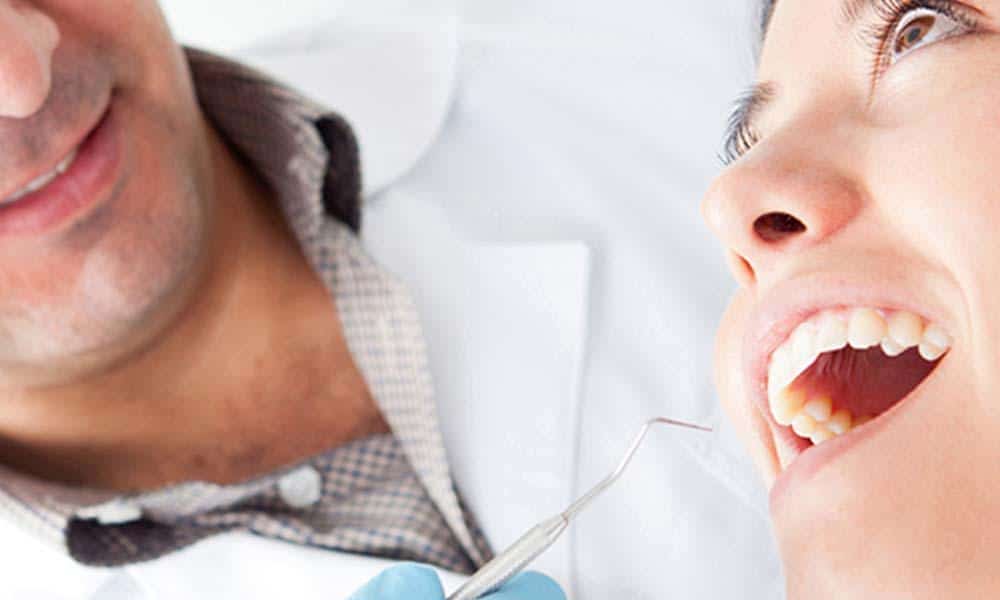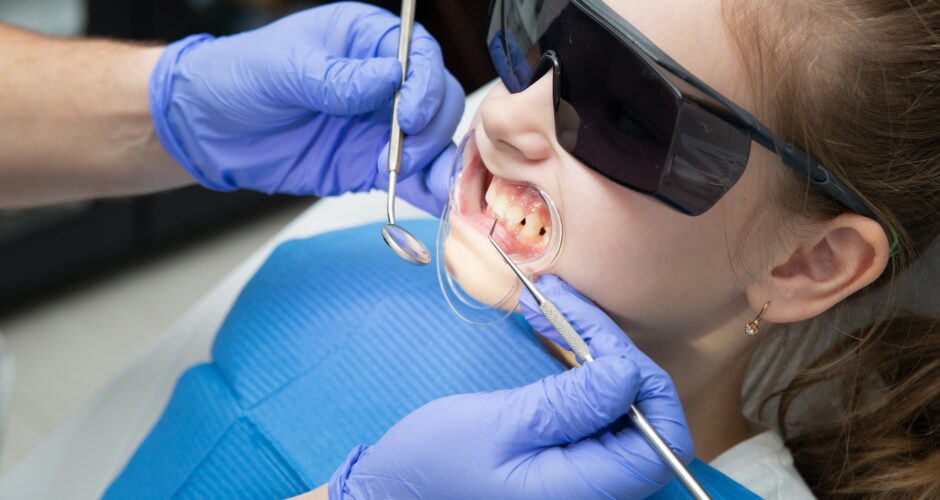
Who’s Afraid of the Big Bad Root Canal?
September 2, 2015
Pregnancy and Your Dental Health
October 27, 2015If your dentist or periodontist has recently told you that you need a gum graft or gum tissue graft, don’t panic.
Gum surgery tends to sound worse than it is. A dental tissue graft may be necessary to protect your teeth from the damaging effects of gum recession and to improve your oral hygiene.
You need a gum tissue graft, also known as a gum graft, when your tissue recedes. Recession is the process in which the tissue surrounding the teeth pulls away from them, which causes exposure to more of the tooth structure or root.
In this blog, we’ll cover what you need to know about tissue grafts:
- The causes of gum recession
- The types of gum grafts
- The gum tissue graft process
- Methods of aftercare and healing
When you know what you need to do and when, you can continue flashing that gorgeous smile!
[Related: Are Your Gums Receding and You Don’t Know What to Do About It?]
Gum Recession
When gum recession occurs, the body loses a natural defense against both bacterial penetration and trauma. The process can also damage the supporting bone.
Gum recession is a common dental problem — advanced gum disease affects 4% to 12% of adults — but it often goes unnoticed until symptoms become more severe.
Many people don’t even notice that their gums have receded because the process is so gradual. However, over time, an exposed tooth root can not only look ugly but also cause tooth sensitivity, especially when eating cold or hot foods. If left untreated, gum recession can eventually cause tooth loss.
When recession on a tooth is a problem, gum reconstruction using grafting techniques is an excellent option. Grafting both improves your appearance and protects the exposed root surface that causes sensitivity and is more susceptible to decay.
Your gums may have receded for a variety of reasons:
- Genetics
- Periodontal disease
- Poor bite alignment
- Aggressive tooth brushing
- Orthodontics
A gum graft (tissue graft) can repair the defect and help prevent further recession and bone loss.
[Related: What Is Bone Grafting? Why Is It Necessary for an Implant?]
Tissue Graft Types and Processes
For any tissue graft, your dentist uses local anesthetic for your comfort. Then, they perform one of four types of tissue grafting procedures.
The three options for using your own tissue (which is preferable) are connective tissue grafts, free tissue grafts and pedicle tissue grafts. The fourth graft type is an allograft, which involves using tissue from a donor tissue bank.
Connective Tissue Graft

A connective tissue graft uses your own tissue from the roof of your mouth.
Your periodontist makes a small incision and removes a section of subepithelial tissue. That’s the layer of tissue under the skin’s surface layer.
At this point, your periodontist has prepped the area where the tissue will go. They’ve also created a kind of “pocket” for the subepithelial tissue to fit into, like an envelope.
They then place the tissue in the pocket along the tooth or teeth that need grafting and sew it into place. Finally, they sew together both pockets in the roof of your mouth and along your tooth or teeth.
Periodontists commonly use this method to treat root exposure.
Free Tissue Graft
Free tissue grafts also involve using your own tissue from your palate. However, instead of taking an underlying layer of tissue, the periodontist removes tissue directly from the top layer of skin on the palate.
Periodontists mainly use this method for people who have thin gums to begin with.
[Related: Considering Gingival Flap Surgery? Here’s What You Should Know]
Pedicle Graft
A periodontist performs a pedicle graft for people who already have a good amount of tissue because they don’t need to take any tissue from the roof of the mouth. In essence, they pull the existing tissue around the tooth that needs grafting from one tooth to the next.
They then make a “flap” in the tissue, called a pedicle, and partially cut it away so that one edge remains attached to the gum. Finally, they pull the tissue over or down to cover the exposed root and stitch it in place.
Allograft
Periodontists primarily perform allografting when a patient needs multiple teeth grafts and can’t supply enough of their own gum tissue to cover the area. Though using your own tissue is preferable (because it usually yields better results), allografting is a good way to go if you can’t.
In this procedure, the periodontist uses medically processed, donated human tissue as a tissue source for the graft. As a patient, you have one definite advantage: You don’t need a donor site from your palate, so you have less pain.
Doctors originally developed allograft (known medically as acellular dermal matrix) for the treatment of burn patients in the 1950s. Surgeons in hospitals nationwide use allografting to treat patients who need gum reconstruction.
Periodontists perform the procedure the same as they would for a connective tissue graft. However, instead of taking your own tissue and placing it into the pocket along your teeth, they place the allograft in that pocket, then sew the pocket closed.
[Related: Gum Bleaching, Whitening and Lightening: What You Need to Know]
Aftercare and Healing
No matter which type of tissue graft you choose, the site of the tooth or teeth that needed grafting shouldn’t hurt too badly after the procedure.
If your periodontist took tissue from the roof of your mouth, that site may feel similar to burning your mouth on hot food. Nonetheless, that sensation is short-lived, and the site heals quickly. Your palate is one of your fastest-healing areas — you should be back to eating anything you want in no time.
The healing process for tissue grafting takes about three months total. The initial healing stages take place between the first and third weeks. Within three weeks, the tissue’s initial healing is complete, and you can return to eating your regular diet and routinely brushing and flossing.
After three months, you meet with your dentist or periodontist. They reassess the grafting area to make sure healing is progressing as planned around your gums and the roof of your mouth.
Tissue grafts may sound scary, but they’re fairly routine procedures that take about an hour and are done under local anesthetic. Post-procedure discomfort or pain should be minimal, and you get to eat things like ice cream and milkshakes for the next couple days!
Contact Cascadia Dental Specialists Today!
If you have any questions or concerns about dental tissue grafts, oral hygiene, gum tissue graft, or any dental procedure, please schedule an appointment for a consultation, reach out to Cascadia Dental Specialists.
Please contact us at (425) 644-7444, on our online contact form or via email at info@cascadiadental.com.
We’ll speak with you soon!
Featured image via Pexels





